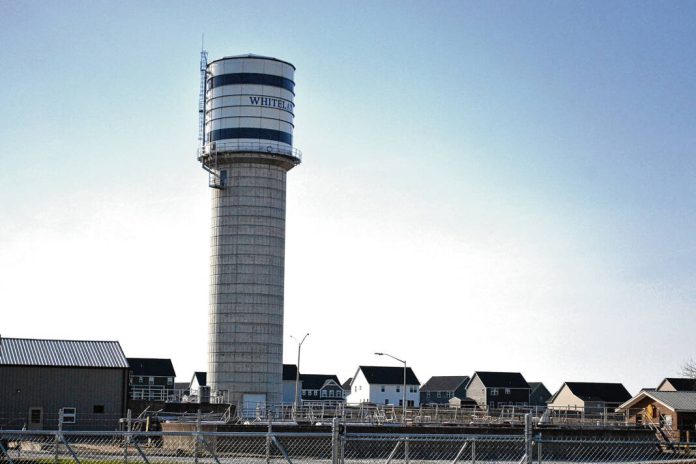Whiteland water and sewer customers will likely see a rate increase, but exactly how much is still being determined.
After an “arduous process,” Indiana American Water, the community’s water utility provider, recently approved a 38.1% rate increase for the town of Whiteland, said Stephen Watson, town attorney. The Indiana Utility Regulatory Commission approved the increase on Feb. 14, which led town officials to discuss a potential increase to the community’s water rate to help aid the cost.
IAW first asked for statewide base rate adjustments last year, with the new rates going into effect Feb. 21. The request was driven by approximately $875 million in water and wastewater investments the utility has done since the last approved rate adjustment in September 2018, as well as increases in the cost of procuring chemicals, goods and services. The $875 million in water and wastewater investments are expected to made through April 2025, utility officials said last month.
After IAW announced the increase request last year, several municipalities asked to intervene in the case and expressed concerns about how the rate increases could affect them. The utility serves residential customers and sells its water at a wholesale price to municipalities that operate their own utilities, including Whiteland.
Although the 38.1% increase is high, Watson says the increase “wasn’t as bad as it could have been.” IAW originally requested a 49.3% increase, he told the town council Tuesday.
“We were fighting for as low an increase as we could, but we weren’t going to get zero,” Watson said. “That is not practically possible. The biggest thing that we were trying to fight against was getting a rate increase at a proportion or percentage that was higher than other customer groups.”
Whiteland’s increase was 150% more than the rate increases that other customer groups received, deriving from the community not “paying the fair share of what it costs Indiana American to provide its water as compared in particular to the other groups, the retail customers,” Watson said.
The IURC agreed that the increase was the correct outcome and that the community needed to have the rate increased to “avoid being subsidized by the other groups,” he said. IAW will increase Whiteland’s rates in three phases, with the first expected to be 24.1%, Watson said. Once all increases have occurred, they are expected to equal 38.1%.
IAW’s new rates will cause the town’s water utility expenses to increase by about $140,000 a year. When addressing the potential rate raise that could impact customers, Watson recommended the town officials have their rate consultant determine the exact applicable percentage.
“It will be less than the 38% that [the town] is going to be increased when we pay Indiana American,” Watson said. “Our cost of running our utility is much more than just paying Indiana American.”
Watson estimated the increase could be about 12% for customers, but that number could fluctuate based on the calculations of their rate consultant.
“They are still crunching the numbers and it is still very much a draft,” said Carmen Young, the town’s director of administration.
The last water rate increase to take place in Whiteland was in 2014, and it has been over 20 years since the last sewer bill increased, Young said.
Addressing IAW’s new rate will be a “hard decision” for the town council, member Tim Brown said.
Council member Brad Goedecker recalled that several years ago the council considered establishing their own independent water supply. This could be on the table in the future, but is not a realistic plan of action at this time, Young said.
The rate study comes after a series of recent water and sewer issues, including a series of boil water advisories due to various maintenance issues over the past year.





